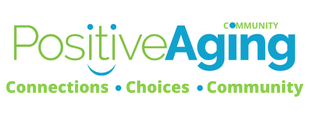|
Report Finds Systemic Gaps in Nursing Home Staffing, Wages for Long-Term Care Workers and Support for Family Caregivers
AARP’s new Long-Term Services and Supports (LTSS) Scorecard finds that more than three years after the COVID-19 pandemic began, care provided in the United States for older adults and people with disabilities is painfully inadequate. The report finds that major gaps persist in every state, including Virginia, especially related to support for family caregivers, worker wages, nursing home staffing, transportation and housing.
Ranking #28 in the country, Virginia has made some progress in improving care options for older adults, including providing Medicaid for low-income people with disabilities and in the supply of available assisted living facilities. However, the report shows there is still much more to be done to keep up with the rapidly changing needs of an aging population. "Too many Virginians rely on a long-term care system that struggles--and often fails--to keep them and their loved ones healthy and safe," said AARP Virginia State Director Jim Dau. "The AARP Scorecard shows that lawmakers and industry providers have plenty of opportunities to improve care and better meet the needs of all Virginians." Additional key findings from the report include: Family Caregiving
Recommendations Key recommendations from the report and AARP to strengthen support for long-term care and aging at home:
The LTSS Scorecard is funded by AARP Foundation with the support of The SCAN Foundation, The Commonwealth Fund, and The John A. Hartford Foundation and has been updated every three years since 2011. "Every person, regardless of where they live, their race, or their socioeconomic background, deserves long-term care that is accessible, safe, and prioritizes what matters most to them,” said Terry Fulmer, PhD, RN, FAAN, president of The John A. Hartford Foundation. “The Scorecard shows that there are significant regional and racial disparities in the care a person receives. State policymakers can and should take steps now to close the gap in access to quality care.” "The LTSS Scorecard indicates progress in some state programs, but opportunities exist for both public and private sectors to enhance LTSS,” said Sarita A. Mohanty, MD, President and Chief Executive Officer of The SCAN Foundation. “Most older adults prefer home and community-based care that meets their needs, but it remains financially out of reach for many working-class families, particularly those who are part of the 'forgotten middle'. TSF is committed to identifying, highlighting, and elevating innovative policies and programs to ensure all older adults can age well in home and community." “Equity is an essential component of high-quality health care, and is especially important in LTSS,” said Melinda Abrams, Executive Vice President, Programs, The Commonwealth Fund. “I am thrilled AARP was able to add race and ethnicity data for several indicators. This year and going forward, this new data will shed light on the experiences people of color in LTSS and draw attention to individuals with the greatest need.” To view the full Scorecard and state-by-state information visit www.ltsschoices.aarp.org. State Rankings:
AARP is the nation's largest nonprofit, nonpartisan organization dedicated to empowering people 50 and older to choose how they live as they age. With a nationwide presence, AARP strengthens communities and advocates for what matters most to the more than 100 million Americans 50-plus and their families: health security, financial stability and personal fulfillment. AARP also produces the nation's largest circulation publications: AARP The Magazine and AARP Bulletin. To learn more, visit www.aarp.org/about-aarp/, www.aarp.org/español or follow @AARP, @AARPenEspañol and @AARPadvocates on social media. About AARP Foundation AARP Foundation works to end senior poverty by helping vulnerable people over 50 build economic opportunity. Our approach emphasizes equitable outcomes for populations that have faced systemic discrimination. As AARP's charitable affiliate, we serve AARP members and nonmembers alike. Through vigorous legal advocacy and evidence-based solutions, and by building supportive community connections, we foster resilience, advance equity, and restore hope. To learn more, visit aarpfoundation.org or follow @AARPFoundation on social media. About The SCAN Foundation The SCAN Foundation envisions a society where all of us can age well with purpose. We pursue this vision by igniting bold and equitable changes in how older adults age in both home and community. For more information, visit www.TheSCANFoundation.org. About The Commonwealth Fund The Commonwealth Fund, among the first private foundations started by a woman philanthropist—Anna M. Harkness—was established in 1918 with the broad charge to enhance the common good. The mission of The Commonwealth Fund is to promote a high-performing health care system that achieves better access, improved quality, and greater efficiency, particularly for society’s most vulnerable, including low-income people, the uninsured, and people of color. The Fund carries out this mandate by supporting independent research on health care issues and making grants to improve health care practice and policy. For more information, visit: https://www.commonwealthfund.org. About The John A. Hartford Foundation The John A. Hartford Foundation, based in New York City, is a private, nonpartisan, national philanthropy dedicated to improving the care of older adults. The leader in the field of aging and health, the Foundation has three areas of emphasis: creating age-friendly health systems, supporting family caregivers, and improving serious illness and end-of-life care. For more information, visit: https://www.johnahartford.org.  Fall prevention and senior safety are paramount considerations in ensuring the well-being and independence of our elderly population. As individuals age, their susceptibility to falls and related injuries increases, making it crucial to implement proactive measures. This includes creating safe and clutter-free living spaces, installing handrails and grab bars, and ensuring proper lighting. Regular exercise programs designed to enhance balance and strength, as well as routine health check-ups, can also play a pivotal role in reducing the risk of falls. Moreover, fostering awareness among seniors about potential hazards and providing education on fall prevention strategies are essential steps in safeguarding their quality of life. By prioritizing fall prevention and senior safety, we empower older adults to lead active, confident lives, free from the fear of preventable accidents. |
Archives
July 2024
Categories |
||||||

 RSS Feed
RSS Feed
